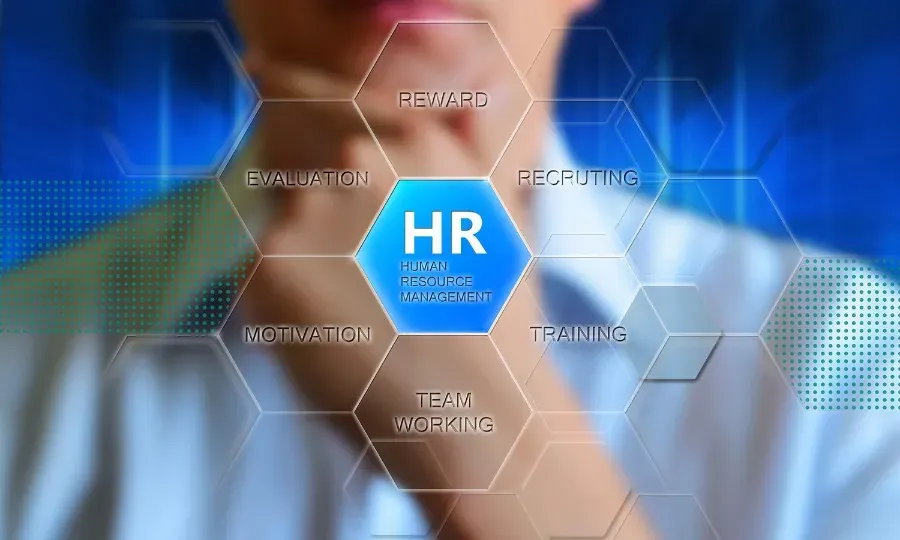HR Can Derive Valuable Insights From Big Data

Big Data impact how we live, how we work and consequently also how we work together. Therefore Big Data should be on the agenda of the Human Resources Manager. When Big Data is applied correctly by the human resource department it can increase employee productivity, decrease costs and improve revenues. Organisations can create better and happier employees with Big Data.
Analyse Workforce and Workplace Behaviour
First of all, Big Data can help organisations to gain an understanding of the workplace behaviour. Sensors installed on office furniture can give insights in how meeting rooms are used by how many employees for how long and when. It can tell how often employees get away from their desk, how long meetings take and who meets with whom. Collecting this data and combining it with other data sources like who works with whom, who emails with whom and who has what knowledge, can spur collaboration and increase efficiency among employees. The data can help designing offices and placing those employees closer to each other who deal with each other regularly. Ben Waber calls the uncovering workplace behaviour with Big Data People Analytics.
Research at a tech company has revealed that large lunch tables (up to twelve people) increase productivity among the employees, due to more social interactions among the employees. Another company, Cubist Pharmaceuticals, used data to reveal it had too many coffee machines. By reducing the amount of coffee machines and creating centralized coffee spots, they increased serendipitous interactions among employees.
When employees feel they are more efficient in their work, meet more employees from different departments and have more interactions with others, they are likely to be more happy at work. Happier employees work harder and as such it is wise to use Big Data to design the office in the best way possible.
The Knowledge Present with the Workforce
Secondly, Big Data can also reveal the knowledge that is present within your organisation. There are tools available in the market that can scan and analyse all documents, emails, phone calls, chat messages, intranet data etc. to understand what knowledge is present within the workforce. These tools can reveal who has what knowledge, which employee is an expert on what topic and which knowledge is lacking. Even more, it can give insights in what knowledge is about to be lost; for example if there is only one employee with knowledge about a certain topic and he or she is about to retire.
The data can also reveal who within an organisation do not have that much knowledge but can be regarded as networkers. These connectors, as Malcom Gladwell called them in Tipping Point, are very important within an organisation as they bring people together. Losing a connector to a competitor can do serious harm to an organisation, so it is clever to know who these employees are within your organisation.
In addition, if employees can simply query your intranet when they need information about a certain topic, Big Data can bring them in contact faster with the right person across your organisation. The knowledge present becomes visible to everyone instead of remaining in silos across your organisation.
Hiring New Employees
Knowing what knowledge is present also reveals the knowledge that is missing. This information will help Human Resources better find the right employees for the job. Even more, Big Data can also help assess those applicants. Tools can automatically scan resumes and social public data of applicants and give a score how well the applicant matches the requirements. In addition, with Big Data online assessments can provide more information than simply answering questions. They way how an applicant answers the questions, how long it takes, how much resources he or she uses, in which order the questions are answered etc. can provide more information about the applicant behaviour than the answers to the questions. Test scores and college grade-point averages only say a little bit about the potential of an applicant. How he or she works is more important.
Key Benefits
These are just a few of the use cases that apply to Human Resources. Using Big Data internally brings many advantages to organisations resulting in valuable benefits:
- Employee productivity will increase due to more interactions and knowledge that is better findable across the organisation;
- Increased productivity will increase the happiness factor of your employees. Happier employees work harder;
- Costs can be reduced for maintaining and improving the corporate culture if Big Data analyses provide valuable insights;
- Revenue will increase due to more productive workers.
Big Brother
Of course, there are also downsides to using Big Data. One of the most important downside is that employees can get the feeling that their boss is watching their every move. A “Big Brother is watching feeling” among employees can seriously affect productivity and employee happiness. Employers therefore have to be transparent to employees about why which data is used, analysed and made widely available internally. It will require a mind shift among the employees that Big Data can help them, without affecting them negatively. Then again, ID badges with sensors are already used for years within organisation to give employees access to the office. This data can also be used to monitor employee behaviour if organisations want to.
Big Data does not only affect all industries, it also affect how companies are organised internally. Human resources will be able to derive valuable insights from the data. Organisations that will implement an internal Big Data strategy will reap the benefits from it and outperform their peers on employee productivity. It does require a different mindset from your Human Resources department as it reveals that even “soft skills” like building a corporate culture or hiring employees can be affected by Big Data.





